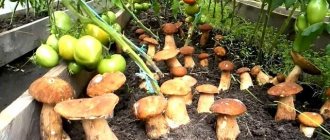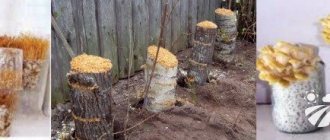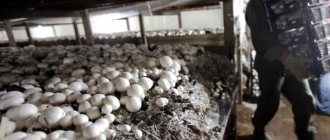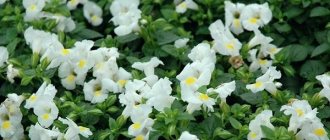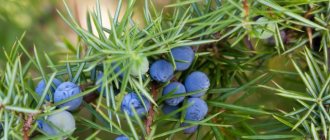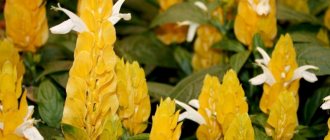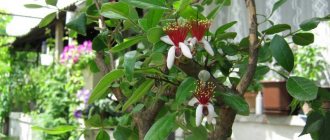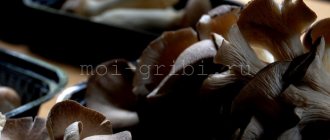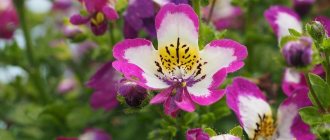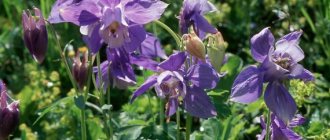What is needed to grow oyster mushrooms?
Growing oyster mushrooms at home requires purchasing some supplies. But first of all, you need to prepare the room. Ideally, there should be 2 of them - incubation and directly for growing mushrooms. You can work in one room, but 2 are more convenient.
The following devices and materials are also required:
- substrate. You can buy ready-made or prepare it yourself;
- mycelium (sold in appropriate stores);
- ordinary fan;
- antiseptic (ethyl alcohol is suitable);
- rubber gloves, gauze bandage, knife and high-quality plastic bags.
Since among the abundant beneficial properties of oyster mushrooms there are a number of contraindications, we recommend reading about the beneficial and harmful properties of oyster mushrooms. When eating mushrooms, it is important to know and apply this information.
Planting mushrooms
When performing work, a gauze bandage is used to protect the respiratory system. This will prevent fungal spores from getting into your lungs. The latter pose a health hazard as they are a powerful allergen. Sterile gloves are put on your hands. Disinfection of instruments and plastic bags is mandatory.
Algorithm of actions:
- grind the mycelium in a closed bag;
- place the substrate in a bag or other selected container;
- place planting material on top;
- alternate layers of mycelium and substrate component until the bag is filled (the first and last layers must be from the substrate);
- tie the neck of the bag.
Related article:
Growing honey mushrooms in a summer cottage
Preparing the premises
To create favorable conditions for growing oyster mushrooms, it is recommended to use a separate room. No living space is needed; a cellar, shed or garage will suffice. During incubation, the temperature should be between 24°C and 26°C and a maximum humidity of 70%.
The room must be cleaned and disinfected. For disinfection, whitewashing with copper sulfate will be sufficient. This will prevent the mycelium from becoming infected with mold.
Cover the ventilation holes with a fine mesh to protect against fungus flies. After incubation, it is necessary to ensure a temperature of up to 18°C and a humidity of 80% to 95%. A cellar is best suited for these purposes.
How to grow
To cultivate oyster mushrooms, you will need to follow a number of technologies. Only in this case can you count on obtaining the maximum possible harvest. First of all, you need to take care of preparing a suitable room. It must fully correspond to the natural habitat of the plant.
Related article:
What mushrooms grow on trees
To grow mushrooms with your own hands, you will have to purchase some supplies. The latter include:
- antiseptic (for example, ethyl alcohol);
- ordinary fan;
- mycelium;
- substrate component;
- plastic bags.
How to properly prepare a room
A separate room is necessary to provide favorable conditions for the cultivation of oyster mushrooms. This could be a garage, greenhouse, barn, cellar. The humidity in it should be no more than 70%, and the air temperature ─ 24-26 degrees. One of the main conditions is sterility. It is recommended to carry out disinfection measures (for example, whitewashing walls using copper sulfate or lime) to prevent the mycelium from becoming infected with mold. The ventilation holes are covered with a fine mesh. This is good protection against fungus fly.
For the basement, the absence of flooding is important. Groundwater can cause serious damage as humidity levels increase significantly.
How to prepare the substrate
Plant materials are used as a substrate component. This is an excellent nutrient medium for mushroom growth. It is breathable, retains moisture well and contains cellulose.
Related article:
Champignon breeding
The most common options:
- husks from sunflower seeds;
- crushed reed stems;
- corn stalks and leaves;
- grape vine;
- straw;
- buckwheat husk;
- non-coniferous sawdust.
Which substrate is best for oyster mushrooms: video
Preparing the substrate is not difficult. The above plant materials can be used either individually or mixed in any ratio. The only important condition is to maintain certain particle sizes (from 0.5 to 3 cm).
Before using the substrate, it must be properly prepared. It is always cleaned and dried. It should be noted that if there are signs of rotting, then such material cannot be used.
The next stage ─ the substrate is subjected to heat treatment. It is boiled for 40 minutes to destroy fungi and harmful microorganisms.
Further algorithm of actions:
- draining water;
- squeezing the material and pouring it into bags;
- hanging bags indoors.
Related article:
Where do truffles grow?
Mycelium
Most often, mycelium is purchased from organizations that breed mushrooms. It is also sold in specialized stores. You can try to grow mycelium yourself at home (on wood, cardboard or grain). This option is not suitable for beginners, because it is a rather complicated process.
You should always pay attention to the sterility and quality of raw materials. Under no circumstances should there be suspicious spots of black, green or grayish color on it. The presence of an ammonia odor also indicates an unhealthy mycelium. Such material is absolutely not suitable for laying. High-quality mycelium has a white or yellow color and a characteristic mushroom smell. It is stored in the refrigerator at a temperature of 4 degrees and remains viable for three months. As for the proportions, 400 g of mycelium are purchased per ten kg of substrate. The yield of the product directly depends on the correct choice of mycelium.
Related article:
How to grow mushrooms on the plot - sowing seedlings
Before planting, the mycelium is kept at room temperature for twenty-four hours. After this, it is disinfected with three percent hydrogen peroxide.
Substrate preparation
Substrate is a nutrient medium in which the mushroom will directly grow. Must contain cellulose. The following can be used as a substrate:
- straw (barley, wheat);
- corn stalks and leaves;
- corn cobs after harvesting grains;
- sunflower seed husks;
- buckwheat husks;
- sawdust from deciduous trees.
The material must be cleaned and dried. If there are signs of rotting, it should not be used. The substrate is subjected to heat treatment. You can simply boil the material for 40 minutes and then leave it to steam for several hours.
Then the water is drained and the material is thoroughly squeezed out. There should be no excess moisture. The material is poured into bags, which are hung indoors. Growing oyster mushrooms in bags is the best way in terms of yield.
Temperature, humidity and ventilation
First of all, the required temperature should not rise or fall sharply . During incubation, there is one mode, after transferring the bags to the room for germination or with a careful and smooth change of conditions, a new one (these data are indicated in the section on growing technology).
Humidity is related to temperature. During mushroom growth, periodic light irrigation is very necessary. Incubation of oyster mushrooms does not require additional moisture; at this time it is necessary to maintain constant indicators. And the already germinating fruiting bodies are irrigated, like the original substrate, with a spray bottle.
It is possible and necessary to ventilate periodically, but carefully (so as not to change other conditions), and only for growing mushrooms. Incubators must be located in rooms equipped with a ventilation system. Drafts should not be allowed.
To maintain the desired air condition, it is advisable to use an air conditioner. The presence of the required amount of carbon dioxide is beneficial for oyster mushrooms - this is why ventilation is initially dangerous, and then must be careful.
Did you know? With sufficient lighting, mushrooms, like human skin, produce vitamin D - which is why they have dark caps.
Oyster mushroom mycelium
It is better to buy mycelium in a specialized store. There are ways to grow oyster mushroom mycelium yourself. However, preparing high-quality planting material at home is extremely difficult and often impossible. Therefore, it is recommended to buy ready-made mycelium to ensure a good birth.
For 10 kg of substrate you need about 400 g of oyster mushroom mycelium. Check that the planting material does not show signs of mold development (gray and black spots, ammonia smell).
If you purchase mycelium in advance, store it only in the refrigerator at a temperature of about 4°C. But, the storage period cannot exceed 9 days.
Under what conditions does oyster mushroom develop best?
In order to get a rich harvest, it is necessary to provide certain conditions, as well as proper care. Pay attention to the recommendations, adherence to which will simplify the process and improve the result:
- The ideal constant air temperature on the plantation is 23-24 degrees plus.
- Bright light is contraindicated for mushrooms.
- The favorable percentage of air humidity in the room is 75-85 units.
Approximately 36-48 hours after the mycelium moves into the substrate, the first check of growth dynamics is carried out. The sown soil acquires a light white coating due to the fact that the mycelium is actively developing. At this stage, it is important to avoid the formation of a crust on the surface - the so-called stroma. The phenomenon can cause the death of the crop, or at least a noticeable deterioration in the harvest.
You should also check the substrate for infection with fungus or bacteria - damage may be indicated by the presence of stains on the “soil”, an unpleasant odor, or strange growths. If damaged blocks are found on the plantation, they must be urgently isolated and disposed of - this will save the entire batch of mycelium from dying.
Incubation period
During incubation, the temperature must be maintained at 18-20°C. The room should be predominantly dark. Do not ventilate the room. For the development of the fungus, carbon dioxide released by the substrate is needed.
But, air flow is needed to cool the material. It can be created with a regular fan. The room itself needs to be closed.
Make cuts in the bags if the vegetative material was placed in layers. The distance between the cuts should be about 10 cm. Do not lean the bags, position them freely.
The incubation period is 16-24 days, which is determined by the specific type of fungus. You should consult the mycelium manufacturer on this issue.

